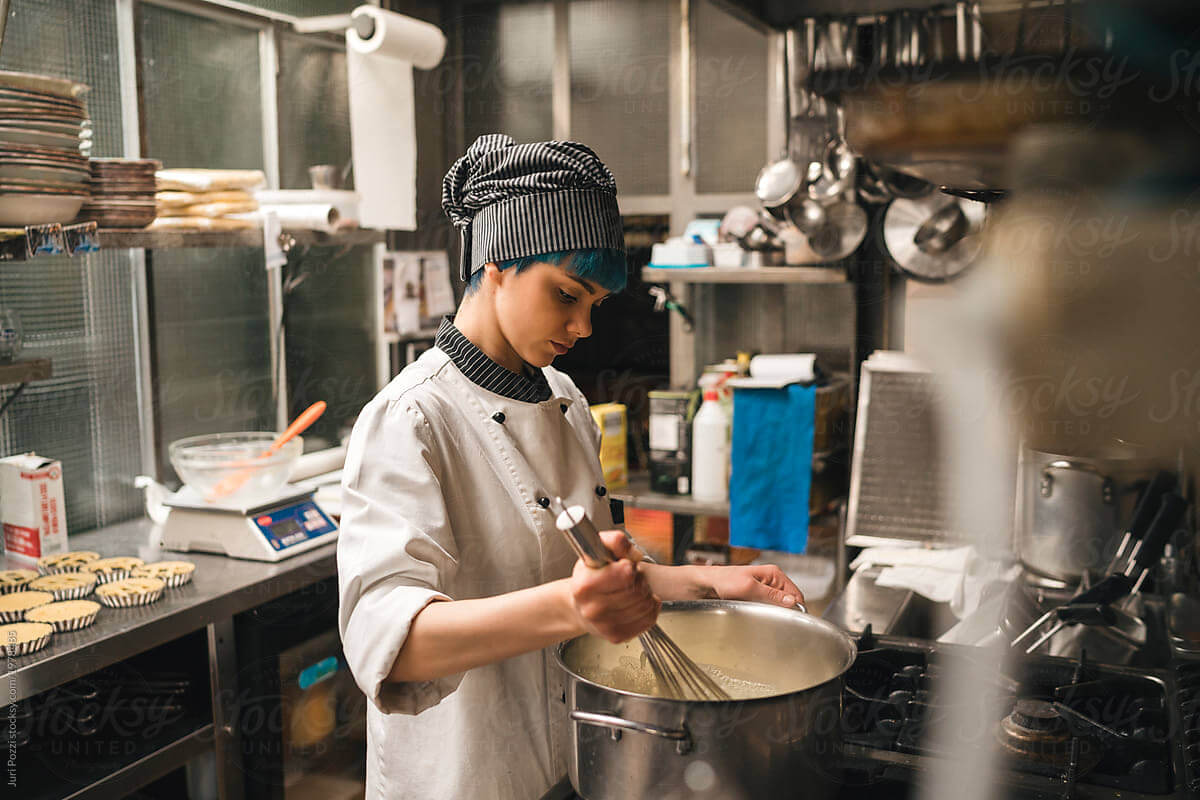SITHCCC011 – Use cookery skills effectively
In this unit you will learn how to;
- Organise and Prepare for Food Service or Production
- Cook Menu Items for Food Service or Production
- Complete End of Shift Requirements
Introduction
What makes the difference between a good, adequate, cook and a great one?
Most certainly some of this will have to do with natural talent and ability as well as training. A great cook, however, is also one who understands the need for meticulous preparation; who knows what equipment to use and when; and who has an in depth understanding of food types and how they can best be combined and prepared to produce delicious, flavoursome dishes.
Organise and Prepare for Food Service or Production
Preparing for food service is every bit as important as the final presentation of a meal. Produce must be cleaned and properly prepared so that the time a customer has to wait for their order is as short as possible; kitchen areas and equipment must be kept hygienically clean to avoid cross contamination; portions must be calculated accurately so that no food products are wasted. A well prepared and clean kitchen will contribute to the overall efficiency and reputation of any restaurant or food establishment and it will be part of your role to ensure this efficiency is achieved.
Calculate ingredient quantities
Working effectively with food means; having a basic understanding of mathematics in order to calculate how much of each ingredient you will need to prepare a given number of dishes. Correct calculation is very important as;
- Using too much produce can mean food items are wasted; a cost to the establishment that it cannot recover
- Using too little may mean you run out of food before service ends and your customers have to wait too long while you prepare a new batch. This is also at a cost to the organisation’s
- Consistency of the product; ensuring that returning customers can enjoy their favourite meal everytime.
The type of ingredients used and the recipes that you prepare, cook and serve will depend on the style, theme or organisation you work for. Ingredients used in a fine dining restaurant, for example, will differ greatly from those used in a take away food outlet or a shopping mall coffee shop. In the case of a fine dining restaurant, food will be prepared to order, whereas in a take away food outlet it will, normally, be pre-prepared and kept hot in a bain marie ready to be served when ordered.
Regardless of the service type offered by your establishment you must ensure that you calculate ingredient quantities as accurately as possible to minimize waste.
Calculating the amount of ingredients you need begins with a standard recipe and recipe cards offer the basic information needed to prepare, cook and serve the dish such as:
- Name of the dish (with description)
- Ingredients in sequential order
- Exact quantities for each ingredient
- Method of preparation
- Preparation time
- Method of cooking to be used
- Cooking time
- Portion yield
In some cases, standard recipes may also include instructions for plating and garnishing and should be consulted when developing workflow plans. Example of a Recipe Card:
…. example is shown in the learning guide….
With a recipe card, such as on the previous page, available you can calculate the ingredients you will need as well as the cost and profit to the organisation.
For example; the recipe above is for Breast Schnitzel resting upon a vegetable cake served with parmesan crisps and onion & mustard sauce that serves one (1). If the restaurant was to prepare this recipe for a lunch time service and they were expecting 50 people over their lunch period they might estimate that 30 people will order this meal (they would base this estimate on past service periods where this menu item was offered).
We know how many / much ingredients are needed to produce one (1) portion, so in order to work out what we will need to produce 30 portions we would multiply by 30;
… detailed calculations are shown in learner guide….
For purchase information go back to hospitality unit page
